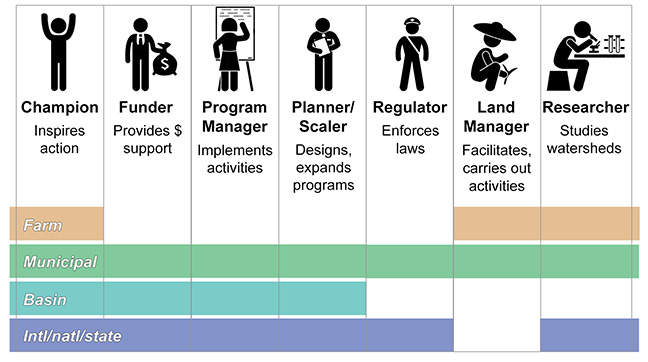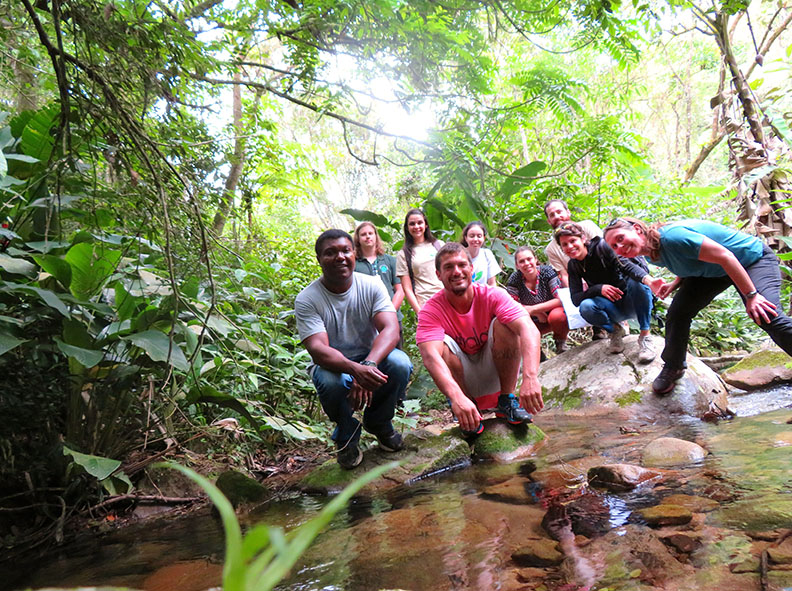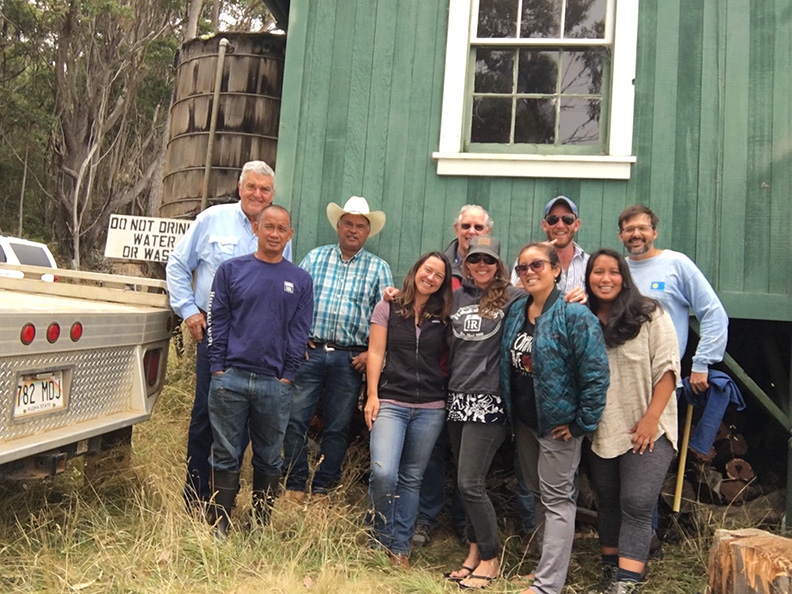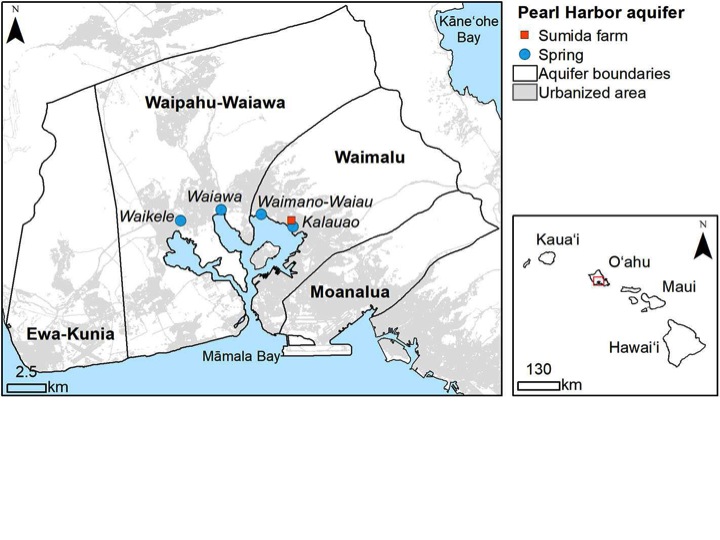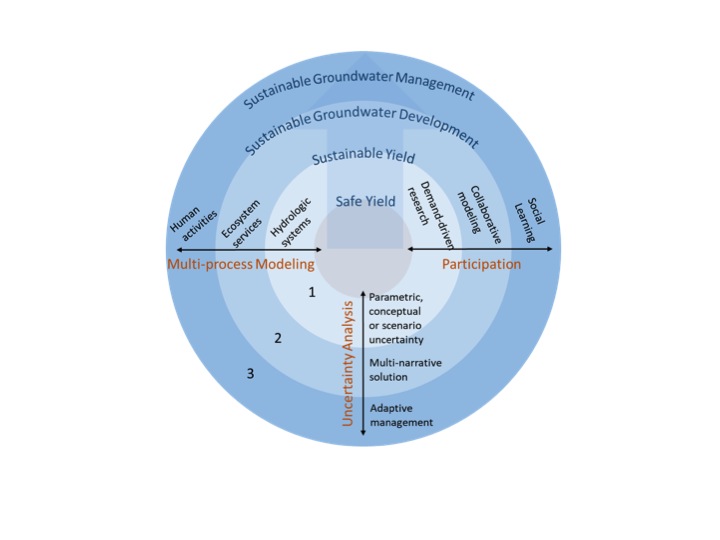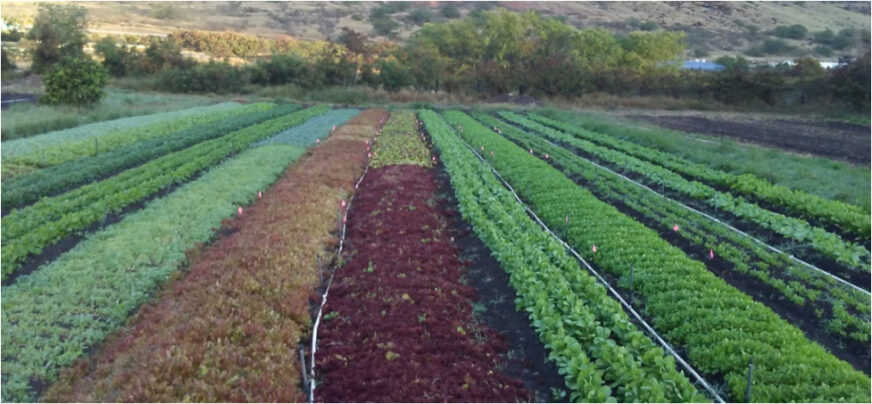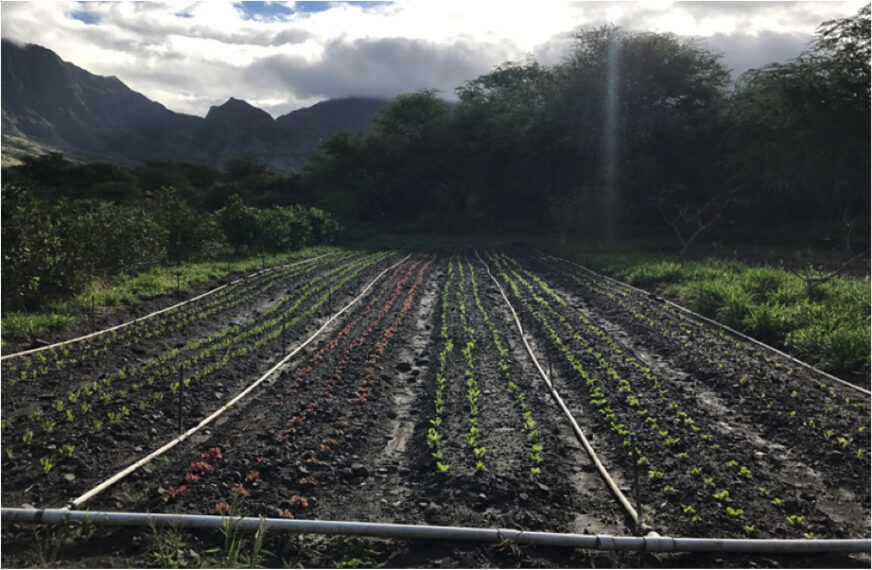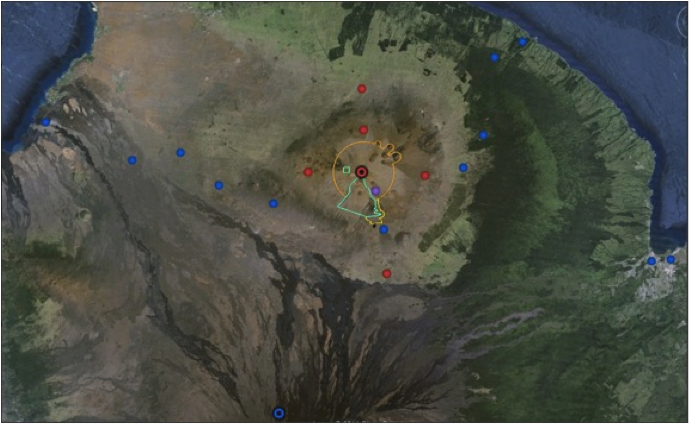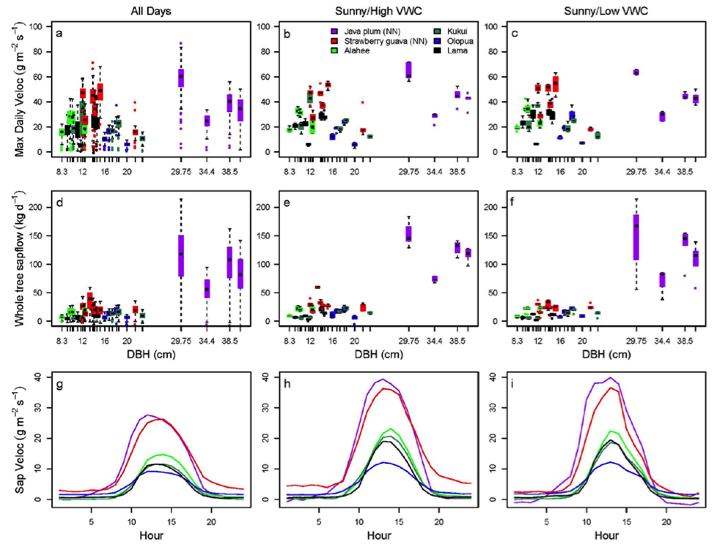Incorporating Historical Spring Discharge Protection Into Sustainable Groundwater Management: A Case Study From Pearl Harbor Aquifer, Hawai‘i
Using a simulation optimization framework, this study incorporates a spring discharge for a watercress farm into the analysis of sustainable yield for operationalizing groundwater policy in the state of Hawai‘i. The research provides decision-makers with information regarding the trade-off between groundwater pumping and spring discharge, which is connected to multiple benefits.
Groundwater Sustainability: A Review of the Interactions Between Science and Policy
This study reviews the concept of groundwater sustainability from both a policy and scientific perspective, tracing the evolution of this concept from safe yield to sustainable groundwater management. The focus is on the diversity of societal values related to groundwater sustainability, and the typology of the aquifer performance and governance factors.
Forecasting Daily Reference Evapotranspiration for Water Resources Conservations and Sustainable Agriculture in Hawai‘i
The objective of this project is to adapt the current CropManage web application to use in Hawai‘i, and to develop accurate methods of forecasting evapotranspiration (ETo) data that in turn, results in more accurate irrigation scheduling.
Real-Time Optimization of Irrigation Scheduling for Farmlands in Hawai‘i, Guam, and American Samoa
The project objective is to expand the capabilities of the CropManage online irrigation scheduling tool to include tropical island parameters such as soil and climate, and to adapt the tool for a wider geographical region that includes the Pacific Islands.
Evaluation of Climate Monitoring on Mauna Kea
In this project we are planning and working to gain the acceptance and participation from relevant stakeholders for future deployment of instrumentation to continuously monitor the climate of the upper elevations of Mauna Kea
Trends In Hawaiian Rainfall: Detection and Attribution Studies Using CMIP6 DAMIP Multi-Model Ensemble
This research allows us to determine to what degree the apparent trends (mostly downward) in Hawai‘i rainfall can be attributed to the effects of global climate changes as opposed to natural variabilities. This outcome will be extremely valuable as a guide to interpreting projections of future changes.
Transpiration Characteristics of Native and Non-Native Plants at a Leeward Ko‘olau Forest Site, O‘ahu, Hawai‘i
Controlling or eradicating non-native plants in Hawai‘i is difficult and expensive. Knowledge of the impacts of non-native plants on water resources is important for water managers and conservation organizations to help them plan for the best use of their resources to restore and maintain the hydrological function of Hawai‘i’s watersheds.
